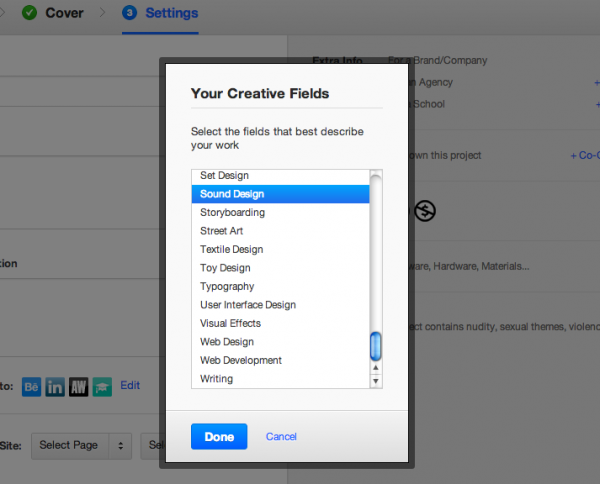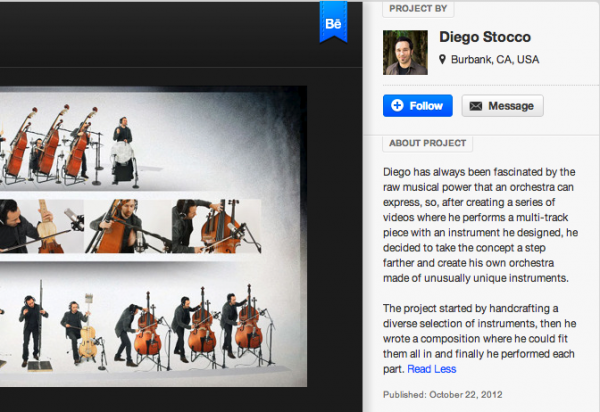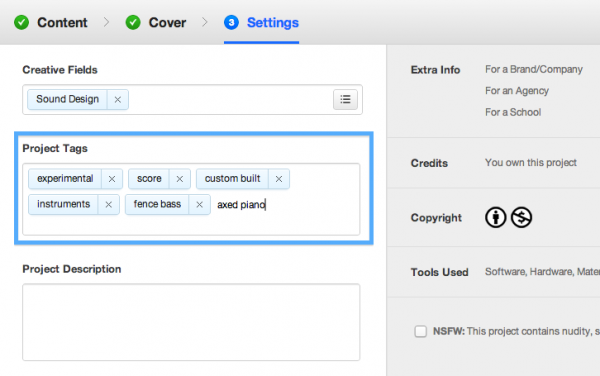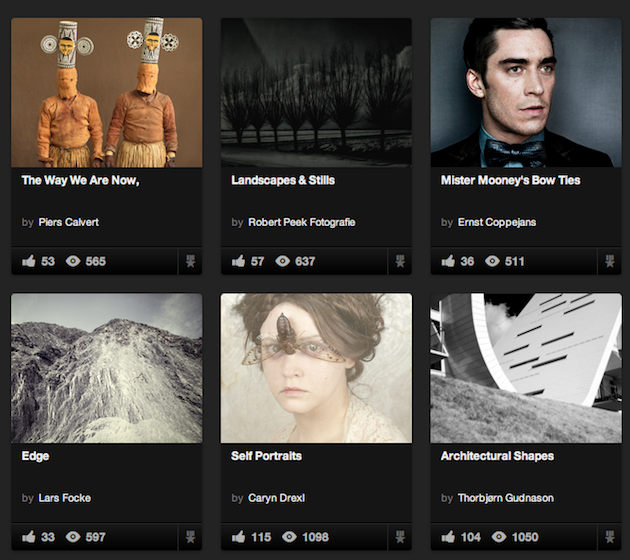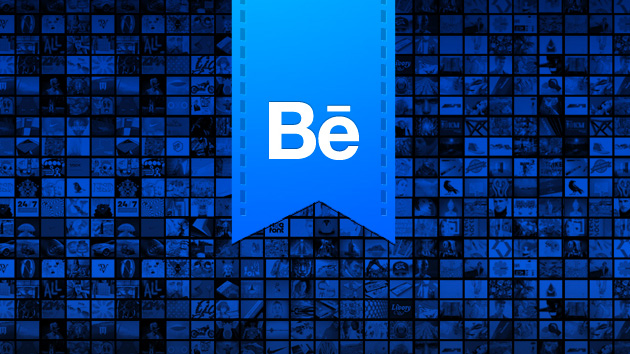This post is part of a series written in collaboration with the Behance Curation Team, the experts on staff who select projects to be featured in Behance’s main Gallery and 12+ Curated “Served” Sites. Click here to see the first post in the series.
After you’ve uploaded the meat of your project - the actual content - there are still important steps to take to round out your project and present a strong, cohesive work. First, choose the right creative field for your work and yourself. Then, provide context for your work by adding text and tags.
Choosing the right creative field for your work and yourself
1) Categorizing your work: When choosing the creative field for a project, select the creative field that represents your role, not necessarily the work as a whole. If your project is a short film, and your role was in sound design, make sure you select Sound Design, not just Film in general, as the creative field. This is the opportunity to highlight the specific work you did.
2) Categorizing yourself: Think about your ideal role-what are the creative fields you’d want to be hired or recruited for? Those fields are the only ones you should list on your profile. You can showcase your interests in other fields in projects, but the profile should highlight your core skillset.
Providing context for your work
1) Specify your role: Take the time to explain your work: Why did you create this work? How did it come together? What does it mean? In some creative fields, explaining your work can be just as important as the work itself. Take the time to tell the story and process behind the piece.
2) Use the right tags and include your team: Tags help your work to be found. Including a few tags regarding genre, technique, or other elements will ensure it pops up in the right searches. Add credits or co-ownership for other members of your crew to make your project even more connected.
